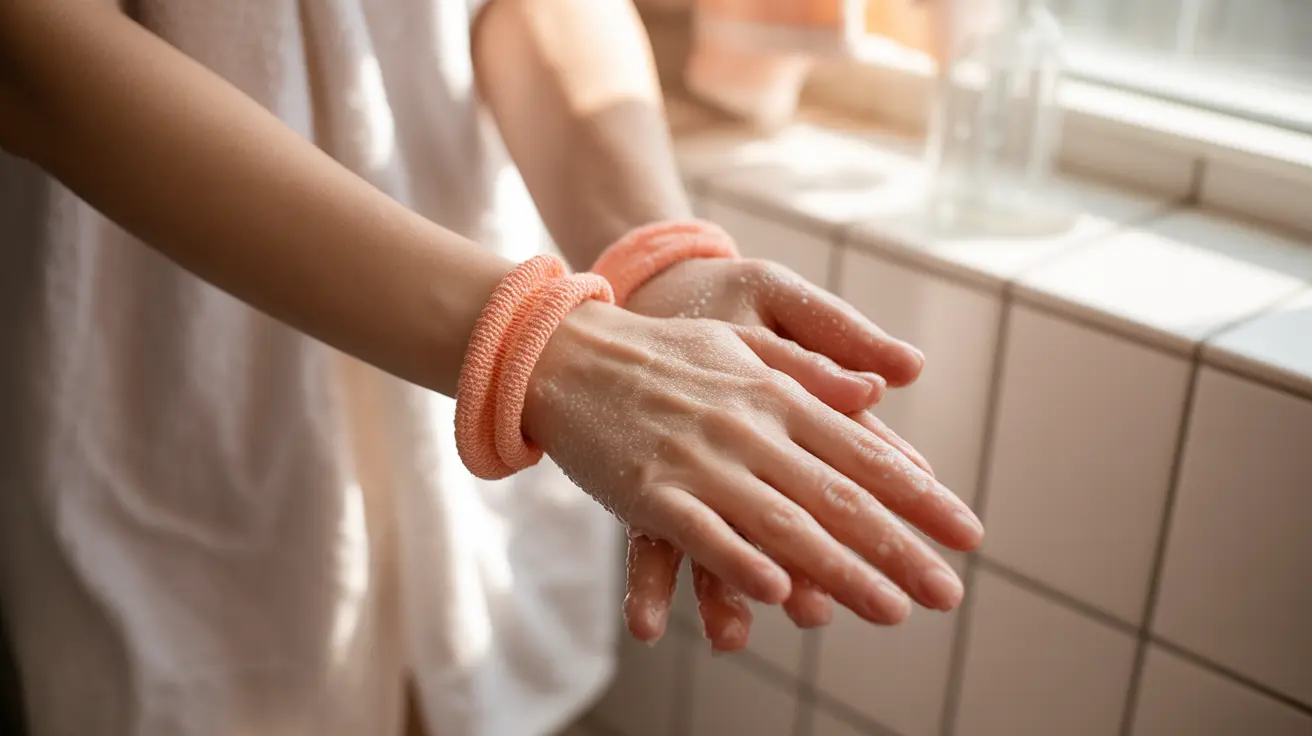Exfoliating gloves have become an increasingly popular tool for achieving smoother, healthier-looking skin. These specialized textured mitts offer a practical and effective way to remove dead skin cells, improve circulation, and enhance your overall skincare routine. Understanding how to use exfoliating gloves properly can make the difference between achieving glowing results and potentially irritating your skin.
In this comprehensive guide, we'll explore everything you need to know about incorporating exfoliating gloves into your skincare regimen, including proper techniques, frequency of use, and essential maintenance tips.
Understanding Exfoliating Gloves
Exfoliating gloves are textured mitts designed specifically for mechanical exfoliation of the skin. Made from materials like nylon, sisal, or other synthetic fibers, these gloves create gentle friction against the skin's surface to remove dead cells and promote cellular turnover.
Proper Usage Technique
Getting Started
Begin with clean, damp skin in the shower or bath. The warm water helps soften the skin and prepare it for exfoliation. Apply your preferred body wash or shower gel directly to the gloves.
Correct Motion
Use gentle, circular motions when exfoliating. Work from your feet upward, always moving toward your heart to promote healthy circulation. Avoid applying excessive pressure, as this can cause irritation.
Benefits of Regular Exfoliation
Regular use of exfoliating gloves can provide numerous benefits for your skin:
- Improved skin texture and tone
- Enhanced circulation
- Better product absorption
- Reduction in keratosis pilaris
- Prevention of ingrown hairs
- Smoother, softer skin appearance
Safe Usage Guidelines
While exfoliating gloves can be beneficial, it's crucial to use them correctly to avoid skin damage:
- Start with once-weekly use
- Monitor your skin's response
- Increase frequency gradually if needed
- Never use on broken or irritated skin
- Avoid facial exfoliation with gloves
- Replace gloves every 3-4 months
Maintenance and Hygiene
Proper care of your exfoliating gloves is essential for preventing bacterial growth and maintaining their effectiveness:
- Rinse thoroughly after each use
- Hang to dry completely between uses
- Wash in hot water weekly
- Store in a well-ventilated area
- Replace if you notice wear and tear
Frequently Asked Questions
How often should I use exfoliating gloves to achieve the best results without damaging my skin?
For most people, using exfoliating gloves 2-3 times per week is optimal. However, start with once weekly and gradually increase frequency based on your skin's response. If you notice any irritation, reduce usage immediately.
What are the benefits and risks of using exfoliating gloves versus chemical exfoliants for different skin types?
Exfoliating gloves provide immediate physical exfoliation and improved circulation, while chemical exfoliants work more gradually and penetrate deeper. Physical exfoliation with gloves carries a higher risk of irritation if used too aggressively, while chemical exfoliants may cause sensitivity to sunlight. Choose based on your skin type and sensitivity level.
How do I properly care for and maintain exfoliating gloves to prevent bacterial buildup?
Rinse gloves thoroughly after each use, hang them to dry completely in a well-ventilated area, and wash them in hot water weekly. Replace them every 3-4 months or sooner if you notice deterioration or persistent odors.
Can exfoliating gloves help prevent ingrown hairs and improve skin texture on sensitive areas?
Yes, gentle use of exfoliating gloves can help prevent ingrown hairs by removing dead skin cells that trap hair beneath the surface. However, use extra caution on sensitive areas and reduce pressure to avoid irritation.
Are exfoliating gloves suitable for people with acne, rosacea, or other skin conditions, and what precautions should be taken?
People with skin conditions should consult their dermatologist before using exfoliating gloves. Those with acne or rosacea may find physical exfoliation too harsh. If approved for use, maintain gentle pressure and reduced frequency, avoiding active breakouts or inflamed areas.




